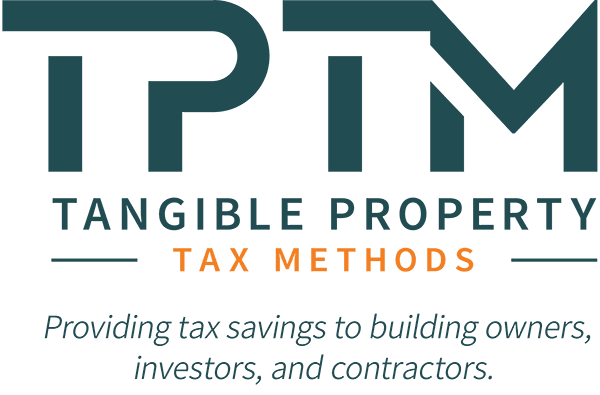Tangible Property Regulations
How To Be Compliant With The
Tangible Property Regulations
The Tangible Property Regulations (TPRs) provide guidelines for building owners to determine to expense or capitalize costs spent on property from 2014 forward. If a building owner and their tax professional have not discussed and planned for the TPRs, both parties will overlook the opportunities. Since 2013, the CPA community has been seeking resource partners who are experts in segregating components of commercial buildings for their clients to take advantage of this underutilized yet mandatory law. These regulations are not just an advantageous opportunity for building owners; this is the law. Under code section 263(a)(1-3), the Tangible Property Regulations are the most significant tax change for real estate owners and investors since the Tax Reform Act of 1986. The repair regulations codify and define which expenditures on assets currently in service can be written down as an expense and which ones need to be capitalized. The regulations also clarify confusion and are designed to reduce conflicts from previous court cases and regulations. The TPRs generally define which expenditures improve an asset and keep it in its current operating condition.
The Tangible Property Regulations are Not Optional.
What is the Benefit of Cost Segregation?
By applying cost segregation and accelerating the depreciation of your building components, you receive a greater depreciation expense and reduced taxable income. The result is an increase in cash flow that you can put back into your business, pay down debt, or purchase more properties.
There is no need to amend previous tax returns
The study fee is a tax-deductible business expense
Will My Building Qualify for Cost Segregation?
Buildings purchased or built since 1986 are candidates for cost segregation. In addition, renovations and building improvements may also qualify for cost segregation.
How TPTM will Work for You
The Tangible Property Regulations are extremely complex and expert guidance is required. When the TPRs are followed, there can be a reduction in income, but the penalties can be severe when ignored.
TPTM will find past expenditures that can now be capitalized and will work with your CPA to correctly implement your updated depreciation. In addition, TPMT will assist taxpayers in deciding how and when to renovate or repair buildings so the expenditures can be expensed. This advice and guidance will create a reduction in the current year’s tax liability and reduce long-term capital gains upon the sale of the property.
What do I need to do to get started?
Fill out the form below, and we will contact you to get started on your building analysis.

